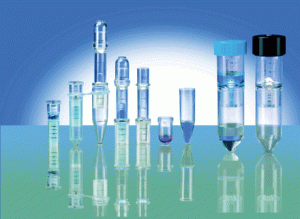With the human genome sequenced, increasing numbers of researchers are turning their attention to proteins—with the hurdle that they must be purified first. A pure sample of protein is required to generate antibodies, conduct binding assays and study structure. Yet the target protein must first be isolated; the debris, salts and reagents washed away; the amount of protein quantified; and, often, the sample concentrated. A major challenge, according to Joern Kirchhuebel, project manager of Proteome Analysis at Eppendorf, is to retain proteins’ native conformations while bringing them into solution. Yet the difficulties, and the importance, of protein work cannot be overstated when it comes to understanding the mechanisms of many, if not all, physiological pathways. Studying the complexities of protein-protein interactions is no easy feat, yet it is vital to unraveling the mysteries of conditions such as Alzheimer disease, diabetes and cancer.

Source from: http://www.nature.com/nmeth/journal/v2/n1/full/nmeth0105-71.html

